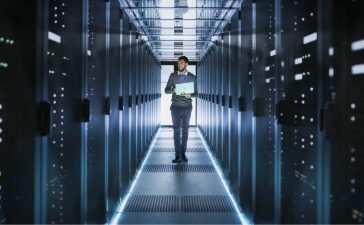In this article, we are going to be talking about the future of work in the USA, and how technology is changing job opportunities. We will discuss the importance of robots, and how they are replacing human judgment and thought. We will also talk about the impact of trade, and how the design of jobs is being affected.
Robots are replacing human judgment and thought
The rise of robots in the workplace raises the question of the future of meaningful work. Optimists believe that robots will enhance productivity, improve outcomes, and provide cost savings. While pessimists argue that robots will destroy jobs and create income inequality.
There are many reasons why the benefits of robots will outweigh the risks. On the one hand, robots free up creative and recursive work that previously would have been done by human workers. This can lead to more innovation and better outcomes. Robots also allow human workers to exercise their skills, build trust, and contribute to a team.
However, the real benefits of robots in the workplace may be in helping humans realize their purposes in the workplace. For example, robots can help doctors diagnose patients with more precision. By combining the expertise of human pathologists with AI classification, the error rate is reduced by an average of 85%.
Moreover, introducing robots into the workplace can increase workers’ self-esteem. They might feel like they’re part of a great team or focus on better outcomes.
Machine learning and narrow AI are affecting most, if not all, industries
While many people think of AI as something that’s used for certain tasks, such as internet searches or cybersecurity, there are also more broad uses of the technology. This includes virtual assistants, such as Google and Alexa.
The most common use of artificial intelligence today is machine learning, which aims to train computers to solve complex problems. Machine learning systems use large amounts of data to generate insights and inform decision makers.
Another popular application is narrow AI, which aims to do a specific task better than humans. These types of systems are also sometimes referred to as “weak AI.” A weak AI system can spot a cancerous mass faster than a trained radiologist.
Narrow AI systems have a limited memory, but they can outperform humans in certain tasks. For example, a retail customer service chatbot can answer questions about product quality and store hours.
However, there are concerns about how these technologies might impact privacy. Because of AI’s reliance on big data, critics say that privacy could suffer.
High-risk jobs vs low-risk jobs
High-risk jobs are often considered more dangerous than low-risk jobs. However, not all jobs in America are the same. It turns out that a number of “safe” jobs have hidden dangers that are not obvious to the untrained eye. Among other things, a job requiring heavy machinery and tools is considered to be more dangerous than a job that requires little physical exertion.
As for the high-risk jobs of yesteryear, a study compared the relative safety of different types of jobs. Among other things, the study found that the safest jobs require less physical activity, have fewer workers, and are generally more secure. The study also noted that many of these safer jobs require less travel, are located in more secure buildings, and pay a few bucks less than the average wage.
Another study looked at the complexities of the American labor force to figure out the true incidence of accidents and illnesses at the workplace. What it found was that the number of injuries and illnesses at the workplace has been declining since 2013. In fact, the total number of workers injured or sick at work declined by 5.7% in the year 2020.
Impact of trade on job design
As policymakers seek to develop appropriate measures to mitigate the impact of trade on job design in the USA, this paper considers the methodological approaches that can be used to assess the empirical impact of trade. It also explores the advantages and limitations of each approach and identifies potential data requirements.
One of the most common methodological approaches is the computable partial equilibrium model. This type of model allows one to make quantitative changes in employment and welfare. Another approach is the Software for Market Analysis and Restrictions on Trade (SMART) model, which estimates the changes in trade flows and tariff revenue. In addition, there are several PE models developed for empirical assessment of the impact of trade in specific good markets.
While these methods are useful, they require a substantial investment of time and financial resources. Mixed methods, on the other hand, combine quantitative and qualitative research. They include an intensive data collection process that involves collecting detailed information from a small number of participants. These methods can provide a more comprehensive account of the impact of trade on labour markets.





